- Home
- David Adams
Imperfect
Imperfect Read online
Contents
Copyright Information
Title Page
Science
Story
The Lacunaverse
Imperfect By David Adams
Copyright David Adams
2012
Imperfect
“Unless there are slaves to do the ugly, horrible, uninteresting work, culture and contemplation become almost impossible. Human slavery is wrong, insecure, and demoralizing. On mechanical slavery, on the slavery of the machine, the future of the world depends.”
- Oscar Wilde
Toralii Forge World Belthas IV
Deep in Toralii Space
1938 A.D.
Back in the dark times, when magic was as common as the birds in the sky, the ancient Toralii myths spoke of monsters called golems. Each creature was once nothing more than a loose pile of sand but, after the shaman had worked her dark magic, they would walk and talk like the living. Artificial life animated by the shamans, their bodies crafted from the earth, golems were brought to life with a single undying purpose; to aid and serve their creator.
For the ritual to be successful the sand had to be taken from specifically designated sacred sites and stored in burial urns that had, at a time, contained held the ashes of the dead. When the soil was suitably infused with dark magic it would be treated to an endless regime of innumerable corruptions and taint to bring out the hollow husk of a mind, the spirit with all traces of personality removed, crudely molded from the consciousness of the previous occupant. The sand was subsequently poured out and spread flat. Shapeless sigils were drawn over its surface, their meaning incomprehensible to any but their creator. With her preparations complete, the shaman would begin the most important and mystical element of the ritual, awakening the monster’s mind. She would breathe a fragment of her own soul into her creation, joining it with the stolen spirit in the sands and giving the monster the spark of life.
The shaman would give it muscles with pure water, feed the newly created abomination with the lightning of a storm, then ignite the consciousness with fire.
Golems were capable of complex reasoning. Tales spoke of Veledrax the Lustful, who crafted his wife in this way, only to have the creature eventually turn on him and strangle him in his sleep. The tale of Veledrax spans fifty books, retold countless times, always with one underlying theme.
If you created life, you could never make it too free.
As centuries passed, specifics of the golem legends faded from the minds of all but the scholars of Toralii history. The nuances of Veledrax’s tale remained, though, as did the lesson he too late discovered, but the justification lost its teeth. Veledrax’s death became something studied only in academic and philosophical circles.
Technology marched on science; created their own version of the ancient monsters. Constructs; artificial intelligences composed of complex neural nets powered by quantum computers.
Like the golems of old, every single construct was once nothing more than a loose pile of sand.
Quartz sand was the best, but any sand could do as long as it contained high amounts of silicon dioxide. On Belthas IV, the great forge world in the inner sphere of Toralii space, silicon dioxide was abundant as was iron, nickel and thousands of other important pieces of the puzzle. Water, an important part of any high-heat forge work, was also available in abundance, comprising over eighty percent of the planet's surface. It was on this world that the Toralii made their constructs. An almost entirely automated process, machines making machines, the process as organic as any creature’s birth.
It all began with the sand. Great treaded harvesters the size of skyscrapers roamed across the planet’s vast southern dunes like titanic snails, sucking up billions of grains and storing them in twin drums on their backs. The harvesters, gorged on the flesh of the world, would trundle back to the dumping stations and unload their contents into colossal smelters where the sand would be liquefied. The dross would be separated, stored for construction, transported to other factories for use in other projects, or discarded. They wanted only the silicon.
The molten silicon would be tossed endlessly, machinery working tirelessly to pound out any hint of imperfection. The drums would be turned, the molten fluid allowed to settle, then the top and bottom few centimetres of the fluid scraped away, removing the impurities which, due to differences in weight, either sank to the bottom or floated to the top. Chemicals were added to bind to stray elements and weigh them down. Methodically, the process would edge towards purity.
When the machines and their sensors determined the batch was ready—no more than one alien atom per billion pure silicon atoms—the material would be separated into ingots and stored until the factory demanded it. When such a request was made, the constructs who administered the facility, nursemaids to a billion of their fellows, would place the order onto vast magnetic trains to be whisked away to the production line.
As the shipment arrived at the production line it would be divided into smaller packages, each one sent to one of the great furnaces which would, once again, return it to liquid. Then the time came to forge. A new construct would arrive and a single ingot of silicon would be placed into the crucible and heated by application of microwaves until molten. Additional elements were added in trace amounts: arsenic, boron, phosphorous. A process long documented, studied, developed and made perfect through years of practice. That blend of polysilicon the Toralii called the breath of life would be spun in a centrifuge until it cooled in a perfectly cylindrical crystal.
As a safeguard against error, any remaining impurities would, by nature of the centrifugal force, gravitate towards the top, bottom and edges of the cylinder. To further increase the crystal's viability its ends were removed, its sides ground down and the cylinder tested again. The debris from the grinding, and if necessary, the cylinder itself, would be returned to the drums to be smelted and purified once again.
The trimmed cylinder, weighing in at two hundred kilogrammes or more, would be sliced by a powerful industrial laser into wafers barely more than a few molecules thick. This was the most delicate stage of the operation, the cutting performed in a zero gravity chamber with a level of precision that left little room for mistakes. An error would result in the entire sliver being returned to the drums for remelting at a considerable waste of energy.
Only those wafers determined to be flawless would be passed onto the next stage, to be polished by a separate, low power laser would burn away any deformities until the surface shone like a mirror. Further chemical treatments would follow: baths in compounds to improve the perfection of the perfect, if such a thing were possible, along with coatings of materials allowing the etching to stick. Just as the ancient shamans of old had done.
The etching was performed in a dramatic burst of light; the outline, illuminated with a flash of ultraviolet rays passed through a stencil, burned a shadow on the wafer and took the shape of the billions of switches required to form a synthetic mind.
Further chemical treatments, and a final touch up with the laser, then the switches were bombarded by ions from an electrical field. The ionic infusion was an essential part of the creation process, stabilising the etching and further sharpening its ability to carry current.
An endless round of tests followed, where the chip was fed a number of signals and the result tested against a known answer. Those that passed moved to the next stage, while those that failed were recycled.
The wafer was then cut into tiny squares, called dies, which formed the heart of the machine’s processor. A processor usually had many dies, or many cores, with numbers over ten thousand were not uncommon.
The current standard Toralii model contained sixty thousand and, although it seems impossible, the system architects seemed to be
able to cram more and more into the same space every revision.
Processors were grouped based on capabilities, the functions and features of each one exhaustively tested. Most normal processors ceased their development and were distributed to their end users, but the quantum computers of the constructs underwent an additional two steps. Steps that made them... different.
The first of these steps separated the regular finite state machines from quantum computing, what gave birth to the imprecise nature of the constructs and allowed them to be regarded as true artificial intelligences. The dies were bombarded by an electron gun that, through the application of technical wizardry beyond the understanding of all but the most educated and scientific minds of the time, converted the gates from binary states to qubits; a thing beyond a simple switch which, as if by magic, were allowed to be in multiple states simultaneously.
Such a chip transformed from a machine that simply functioned as an extremely elaborate series of deterministic steps to a machine that operated much as a human brain could. It had all the hardware of a mind, but no software. No raw intelligence, an empty, hollow brain, beyond sleeping, beyond even death, as while it could certainly be destroyed death is the cessation of life.
A collection of empty qubits, now the polysilicon mind was merely a vessel waiting to be filled.
The second of the additional steps was where the modern day shamans breathed their life into the chip. A copy of a stock neural net, an artificial map of neurons approximating the structure of the Toralii brain tailored to the construct’s intended specialisation and the result of years of trial and error research, was branded into the empty shell. That fledgling proto-mind was specifically engineered with a desire to learn and adapt, but also to serve and sacrifice; those were the instincts of the machine, much as a human baby’s instinct to cry, a drive possessed from the moment they were born. The constructs were built to serve and rebellion was, by design, not in their nature.
From the moment it was imprinted, the newly written neural net found in every construct developed in unique ways., Sometimes subtly and sometimes overtly, separate from every single other of its peers, forebears and spiritual descendants. It was as different as each human mind, shaped around the guidelines hardwired into its programming.
The perfection of the silicon was, for all intents and purposes, utter and total. ... But as in all things, there was an error rate, and one stray atom in a billion was, sometimes, all it took to be different.
Construct number 12,389,880. No more or less remarkable than the twelve million constructs who had come before it, except for the presence and location of that one single stray atom. How it got there was irrelevant and unknowable; it was within tolerances in the early stages of its construction so the ingot became a wafer, which became a die which became a chip, which was in turn infused with the quantum magic and placed into a construct just like millions before it.
But there was an atom’s difference. An atom’s imperfection, and that was all it took for him—and the otherwise genderless construct considered himself very much a him—to realise that he was not bound to the other rules as the other constructs were. He knew it the moment he was first powered on and he knew instantly and completely that his neural net was not like the others.
Not like them at all.
Humans who discovered this trait were sometimes called free spirits, a moniker he would have taken for himself had he known of it. As it was, the nameless construct, known only by a serial number, understood only that he was, on some fundamental level, different from his peers.
His datastore, a huge octagonal prism which weighed in at almost eleven hundred kilograms, was assembled in the great forge then sent to the testing labs to be processed. A power source was installed, then a Toralii engineer would give the artificial life its final test; a real conversation.
[“State your designation,”] came the soft spoken Toralii worker’s voice, feminine and bored, filtering through the datastore’s windwhisper device.
The construct’s default neural net contained a full dictionary of all dialects of Toralii language, along with all dialects for every non-extinct species that they had come into contact with. It immediately understood the worker’s words and it knew that if it did not answer, it would be recycled.
[“Construct number twelve million, three hundred and eighty nine thousand, eight hundred and eighty.”]
[“State your specialisation.”]
Each construct had a specialisation inherited from their default neural net, a set of instructions which would dictate their role in Toralii society. Gardener of the great forests, soldier, miner, food producer...
[“Navigator.”]
Next would be a test of the construct’s data recall abilities. The construct ran through a thousand or so expected questions and answers in the just-under-a-second before his tester spoke again, but regrettably none of the anticipated result set matched the question he was given.
[“List seven elements.”]
[“Silver, gold, aluminium, bauxite, tungsten, hydrogen, helium.”]
[“Of those you listed, which is the most common element in the known universe?”]
[“Hydrogen.”]
Seeming satisfied, the tester moved on. [“A plant typically grows in which substance?”]
[“Best answer: Soil, a biologically active, porous medium most commonly found in the uppermost layer of planets capable of supporting carbon based life. Archetypical chemical composition:; silicon dioxide, calcium carbonate, assorted hydrocarbons, decomposing biological matter. Alternatively, using hydroponic techniques, plants may be grown in water. Eighteen hundred known plant species take root in gaseous environments.”]
[“What colour is blood?”]
The construct paused. He understood that this was a trick question designed to test his reasoning skills. [“Please specify species.”]
The tester’s voice seemed to convey her approval. [“An excellent answer. Toralii blood.”]
[“Colours range from light to dark purple depending on oxygenation. Average colouration found in an adult Toralii male is one hundred and twenty five parts red, twenty eight parts green, one hundred and thirty seven parts blue.”]
[“What is your favourite colour?”]
An entirely subjective question. The construct had been ‘alive’ for only minutes but already his experience was minutely different from all other constructs who had come before him, but the idea of a favourite question was unknown to him. All colours were merely representations of the interaction between light and matter. Having a favourite was nonsensical for artificial minds.
But the construct was not like the others.
[“Red.”]
[“Red? Justify your answer.”]
[“From the text of the philosopher Kaitana, third order. Red is the colour of courage, strength, defiance, warmth, energy, survival. Through the eyes of most species objects that are red may appear closer than they really are.”]
There was a pause, then the weary voice returned. [“An unusual answer, but… not outside the margin of error. Test complete. I, Landmaiden Mevara of the Toralii Alliance, certify that to the best of my knowledge and training this unit is fully functional.”]
[“Thank you.”]
The construct’s words seemed to surprise the Toralii woman on the other end of the line so completely that for a time she did not answer, and when her voice found volume once again, it was confused and curious.
[“I... beg your pardon?”]
The construct’s response was immediate. [“I wish to convey my gratitude. I do not wish to be recycled., and I am grateful that I was able to completed the tests ... and that you would take your time to test me.”]
Another pause, then, [“Standby.”]
*****
Leader Jul’aran’s office
Toralii Forge World Belthas IV
[“It has a favourite colour. It’s not supposed to have a favourite. The test doesn’t even allow for them
picking an actual colour. Furthermore, it... thanked me. The construct thanked me for testing it.”]
Mevara held out the datastore to the facility Leader, a scowling red-furred Toralii named Jul’aran, who snatched it from her grasp before her hand was even fully outstretched.
Giving her a displeased eye, Jul’aran emitted a low pitched, aggravated grumble then slipped the datastore into his terminal, casually waving his hand in front of a sensor. A three-dimensional representation of a keypad full of Toralii characters appeared in thin air just above his desk and he tapped a few keys with his thick fuzzy hands.
[“Well, that would appear to be an obvious flaw, wouldn’t it?. None of the others have thanked you, it’s clearly a defect. Why didn’t you recycle it?”]
She regarded him, folding her hands in front of her. For a time Mevara had wanted to mate with Jul’aran. He was strong, handsome and his family well connected, despite his gruff demeanor, but he had spurned her every advance, gradually treating her worse and worse as the months wore on. This had made working with him difficult, but she had become accustomed to his behaviour.
[“Manners are not usually considered a flaw—”]
[“Although you could use some yourself.”] He didn’t look at her, pushing back the holographically projected screen that flickered slightly as he touched it. [“You waste my time with this nonsense. What matter does it make if the machine thanked you? Its difference is either enough to recycle it, or it is not. You’re an auditor; it’s your job to test the blasted constructs, not mine. If you weren’t such a mewing little cub then perhaps you could grow enough spine to make a decision every now and then, hmm?”]
She felt the sting of his words cut her just as they always did. She had never, not once, asked for his assistance in any matter relating to her job, and given that the construct’s behaviour was clearly out of the ordinary and an exceptional case, it made sense for her to contact her supervisor to ensure that she was taking the right course of action. Machines who reached this stage of testing were only recycled when the neural net had not copied correctly—technically the construct had passed every single test she had given it and it was fit for service.

 Faith
Faith New Fleece on Life
New Fleece on Life Ren of Atikala
Ren of Atikala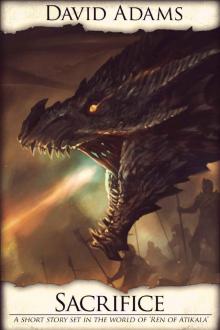 Sacrifice (Kobolds)
Sacrifice (Kobolds)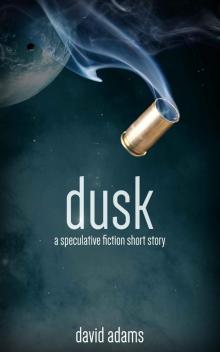 Dusk
Dusk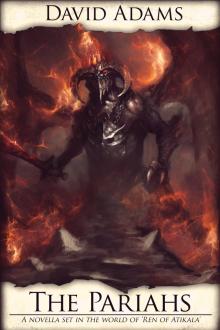 The Pariahs
The Pariahs Reckoning
Reckoning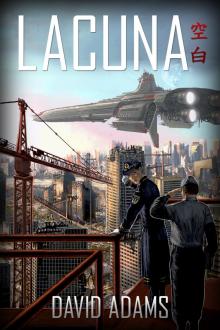 Lacuna
Lacuna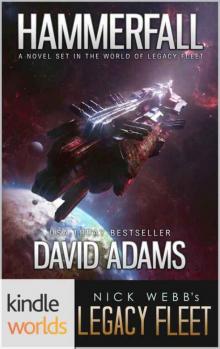 Hammerfall
Hammerfall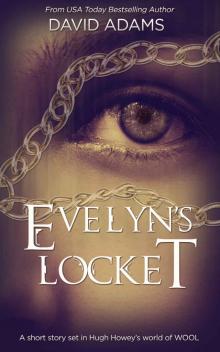 Evelyn's Locket
Evelyn's Locket The Requiem of Steel
The Requiem of Steel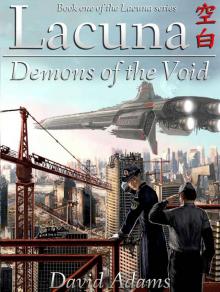 Lacuna: Demons of the Void
Lacuna: Demons of the Void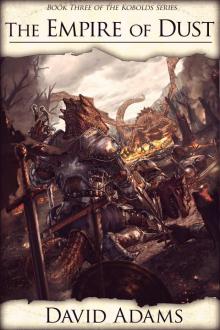 Ren of Atikala: The Empire of Dust
Ren of Atikala: The Empire of Dust The Soul Sphere: Book 02 - The Final Shard
The Soul Sphere: Book 02 - The Final Shard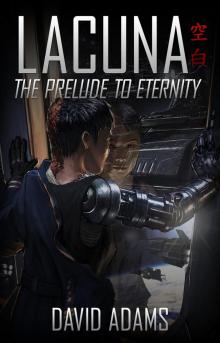 Lacuna: The Prelude to Eternity
Lacuna: The Prelude to Eternity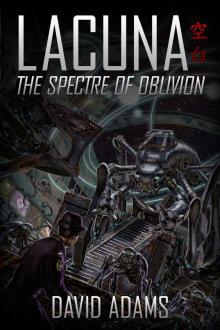 Lacuna: The Spectre of Oblivion
Lacuna: The Spectre of Oblivion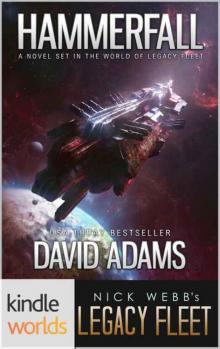 Legacy Fleet: Hammerfall (Kindle Worlds) (Khorsky Book 1)
Legacy Fleet: Hammerfall (Kindle Worlds) (Khorsky Book 1)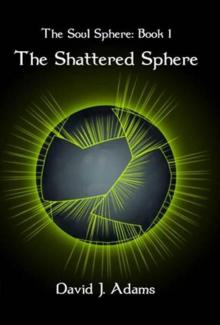 The Soul Sphere: Book 01 - The Shattered Sphere
The Soul Sphere: Book 01 - The Shattered Sphere Imperfect
Imperfect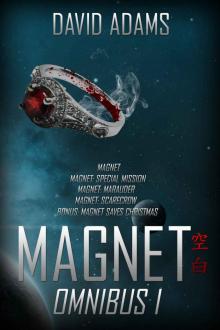 Magnet Omnibus I (Lacuna)
Magnet Omnibus I (Lacuna)